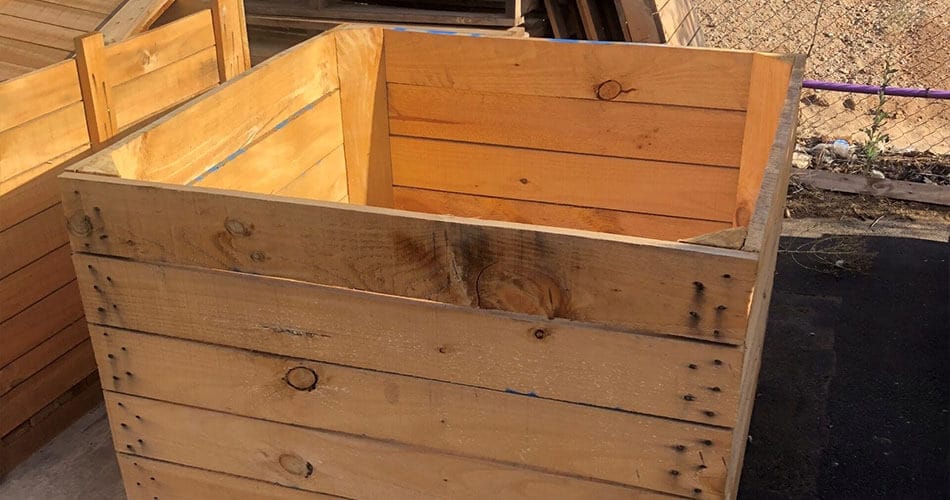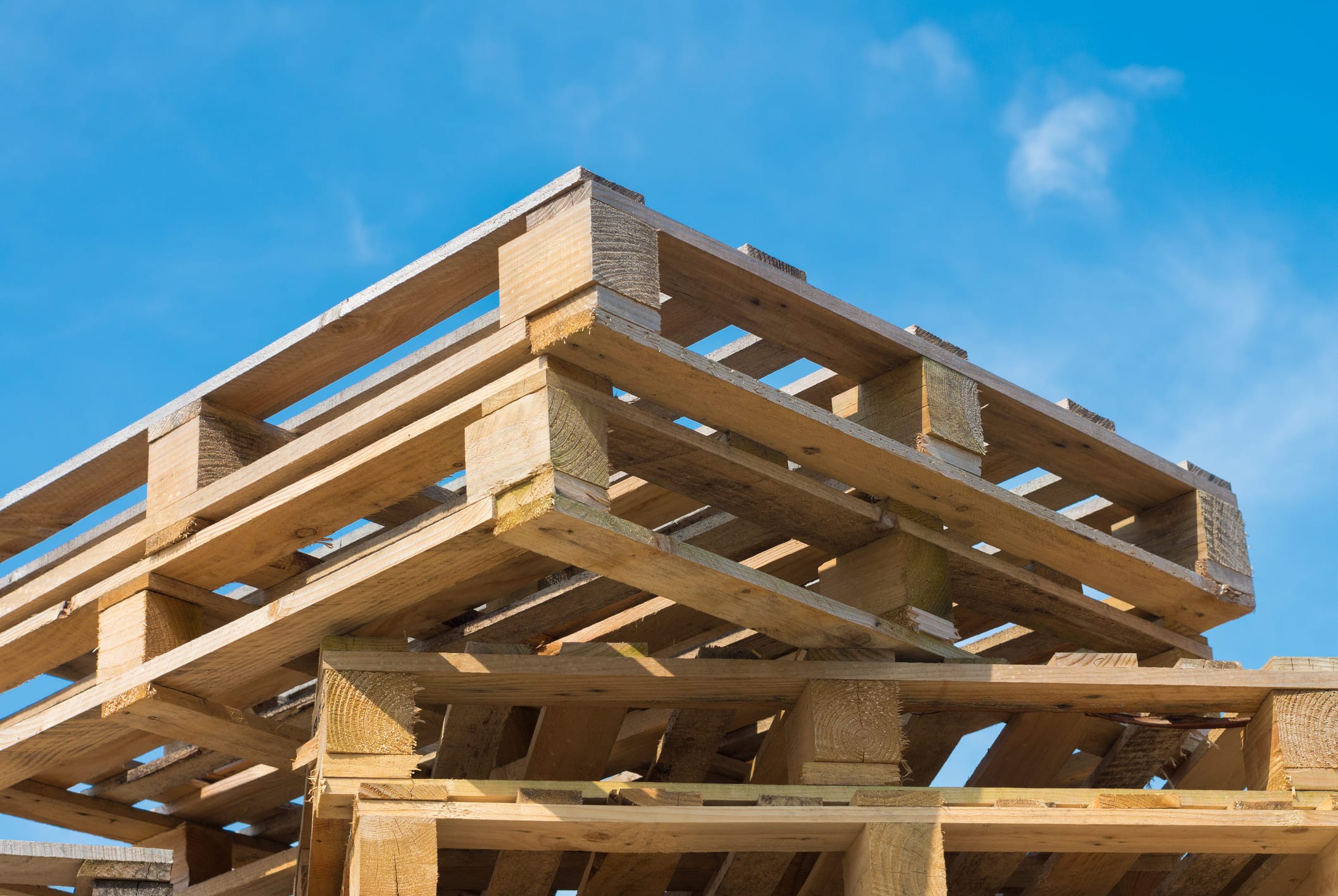Blogs
Timber Cases vs. Plastic Cases: A Comparative Analysis for Packaging Solutions
Introduction to Packaging Solutions

Retailers have grasped the diverse roles sustainable packaging solutions play in their operations. Not only do they impact shipping costs and enhance the unboxing experience, but they also serve as powerful tools for brand recognition and profitability. Moreover, sustainable packaging has the potential to shape consumers' perceptions of both the shopping journey and the brand itself. Timber cases vs. plastic cases—why packaging matters—is thus a central question driving innovation and strategy in the retail sector.
Customers are looking for a packaging experience that goes beyond just protecting the product. For example, sustainability is a key concern for some consumers, driving the demand for environmentally friendly packaging options. Customers prioritise materials that are recyclable, biodegradable, or sourced from sustainable origins. Additionally, minimalistic packaging designs that minimise waste are preferred by eco-conscious shoppers.
Whether it's timber cases or plastic cases, choosing appropriate packaging ensures secure transportation and compliance with federal packaging regulations. Numerous companies that ship exports prefer custom wooden packaging for various reasons, including its durability, versatility, and safety. We will delve further into these advantages in detail within this blog.
Selecting timber shipping cases and crates offers a significant advantage: they can be securely stacked without damage to the materials or products being transported. Unlike cardboard crates, which lack the strength to withstand significant weight and are unsuitable for stacking, wooden crates boast sturdy construction, making them ideal for stacking. While plastic and other materials can be shaped for stacking, thin-walled varieties may lack the necessary structural strength, leading to potential collapse under weight pressure during shipping.
Plastics can partially mitigate their substantial carbon footprint through factors such as reusability, long-lasting durability, and widespread availability. Certain consumers may contend that opting to reuse their existing plastic takeaway containers instead of purchasing new paper packaging would demonstrate greater environmental responsibility. However, it's essential to recognize that plastic packaging production and disposal processes are not environmentally friendly endeavours.

Timber Cases: Strength Derived from Natural Resilience
Durable timber cases offer a crucial advantage in the realm of export packaging due to their robustness and resilience. Their inherent durability and strength make them exceptionally well-suited for safeguarding large, heavy, and intricate items during transit. These sturdy crates provide reliable protection against knocks, mishandling, and impacts, effectively shielding their contents throughout the shipping process.
Durable timber cases minimise transit damage, curbing costly returns and refunds. This safeguards businesses financially and boosts customer satisfaction. Intact deliveries foster trust and loyalty, reducing damaged goods occurrences. Consequently, customers enjoy positive experiences, fostering repeat business and long-term relationships.
Plastic Cases: Longevity within Synthetic Composition
Plastics possess remarkable durability, often rivalling the strength of steel. This inherent resilience safeguards a wide array of products, ranging from perishable food items to delicate mementos and high-value electronics, shielding them from the rigours of production and transportation. With versatile plastic cases, your merchandise arrives on store shelves or at customers' doorsteps in pristine condition, preserving its visual appeal and functionality.
Moreover, the production of durable plastics consumes less energy compared to metals, thanks in part to their lightweight nature. This energy efficiency not only contributes to environmental sustainability but also translates to cost savings for manufacturers. By opting for plastic packaging, businesses can reduce their carbon footprint while maintaining the integrity and quality of their products throughout the supply chain.
Embracing Natural Renewability of Timber Cases
Are you interested in adopting eco-friendly packaging materials and navigating sustainability to enhance your business? You're joining a growing cohort of Australian businesses embracing eco-conscious practices. One innovative approach is the adoption of wooden cases and crates for packaging and shipping, offering a departure from conventional plastic and polystyrene materials. Despite initial scepticism, wood emerges as a sustainable alternative for several compelling reasons.
Moreover, research underscores a strong consumer preference, with 82% to 90% expressing a desire for environmentally friendly packaging and a willingness to pay a premium. This suggests that integrating timber-based packaging into your operations could yield strategic benefits. Yet, the advantages of eco-conscious packaging extend beyond consumer sentiment. This discourse will delve into why opting for wooden cases represents a superior and environmentally responsible choice for your business.
Sustainability Aspects of Plastic Cases
Plastic cases in the packaging industry present a complex relationship with sustainability, embodying challenges and opportunities. While these cases offer durability and protection for products, their production often relies on non-renewable resources and contributes to pollution.
By prioritising eco-friendly materials, designing for recyclability, and embracing innovative approaches, the packaging industry can mitigate its environmental footprint while still meeting the demands of modern consumers.
Here are four key sustainability considerations of plastic cases:
1. Plastic packaging conserves energy
Utilising lightweight plastic packaging significantly diminishes energy consumption during transportation, resulting in reduced fuel usage, emissions, and cost savings across the supply chain. For instance, compared to glass counterparts, plastic yoghurt pots weigh substantially less, leading to decreased packaging load in transport and requiring fewer trucks for distribution.
2. Plastic packaging optimises resource utilisation
The high strength-to-weight ratio of plastic packaging enables efficient resource utilisation by packing the same volume of product with less material compared to traditional options. Without plastic packaging, overall packaging consumption in terms of mass, energy, and greenhouse gas emissions would increase, underscoring the resource efficiency of plastics in packaging.
3. Plastic packaging minimises food waste
Plastic packaging serves as a crucial tool in reducing food waste, particularly at the household level, where nearly half of all discarded food originates. Its durability and sealability help preserve goods, extend shelf life, and minimise waste. For example, modified atmosphere packaging made from plastics can significantly increase the shelf life of products, reducing food loss in stores and at home.
4. Plastic packaging: driving innovation for continuous improvement
The plastics packaging industry has a commendable track record of innovation, consistently improving packaging efficiency and sustainability. Through technological advancements and creative design, the industry has substantially reduced the amount of plastics required for packaging without compromising strength or durability, as evidenced by the remarkable reduction in weight of plastic detergent bottles over the years.

In the realm of packaging solutions, the debate between timber cases and plastic cases has been a longstanding one, encapsulating not only considerations of durability and environmental impact but also cost-effectiveness.
This exploration seeks to unravel the intricacies of CEA within the packaging domain, examining how it informs strategic decisions in choosing between timber and plastic cases, ultimately aiming to identify the most cost-effective packaging options.
What has occurred with timber pricing?
Material Cost of Timber Cases:
- The pandemic and disruptions to shipping led to a dramatic spike in the pricing of building materials, with timber among the most affected commodities over the past couple of years. This surge in demand was exacerbated by shortages of shipping containers, creating fierce competition for timber supplies between countries like Australia and the US.
- Australia's import of structural timber surged to 40% from its usual one-third due to increased demand driven by government stimulus and low borrowing rates. Tim Woods from IndustryEdge highlighted that despite some buyers having long-term price contracts, global timber costs spiked twice in early 2021 and early 2022, with prices tripling rapidly in some instances.
Labor Cost of Timber Cases:
- High materials costs have significantly impacted the building industry, leading to insolvencies reaching near-decade highs in the construction sector. Builders faced challenges in completing jobs profitably due to contracts negotiated before the surge in materials and labour costs. This was worsened by substantial price hikes for skilled trades, increasing the overall cost of projects.
- The heightened demand for renovations and new homes also contributed to a shortage of skilled labour, driving up labour costs even further for projects involving timber cases. This shortage of skilled labour intensified the challenges faced by builders in completing projects within budget constraints, amplifying the overall impact of rising costs on the timber case industry.
The cost-effectiveness of plastic packaging
Plastic packaging is widely recognised for its affordability. Thanks to its lightweight nature, plastic offers substantial savings compared to alternative materials in terms of shipping and transportation expenses.
These savings encompass both the costs involved in delivering products to consumers and those linked to transporting post-consumer materials to recycling facilities.
Moreover, plastic packaging contributes to resource efficiency, translating into cost savings for consumers. For instance, substituting plastic packaging with other materials incurs an 80% increase in cumulative energy demand.
The realm of plastic packaging offers a plethora of additional benefits:
- Lightweight Efficiency - Plastic packaging is remarkably lightweight, comprising just 17% of packaging weight despite its prevalence. Substitutes for plastic, like paper or metal, are roughly 4.5 times heavier on average, leading to increased transportation costs. Moreover, plastic's low weight contributes to sustainability by reducing energy consumption and greenhouse gas emissions.
- Versatile Design - Plastic packaging offers unparalleled versatility, with the ability to mould into various shapes and forms. From bags and bottles to trays and wraps, plastic can adapt to diverse product requirements. Its resilience to environmental factors ensures the protection of products across industries.
- Sustainable Solutions - Despite common misconceptions, plastic packaging promotes sustainability through resource efficiency and environmental benefits. Plastic's resistance to corrosion and bio-inertness extend product shelf life while conserving resources. Comparative studies highlight plastics' significant advantage in mitigating global warming potential, underscoring its role in reducing environmental impact.
In examining the packaging material comparison, such as wood versus plastic, for sustainability objectives within the supply chain, it's crucial to assess their environmental impacts. The examination reveals that wood emerges as a more sustainable choice due to its lower energy consumption during production, recyclability, and ability to biodegrade.
Although plastic packaging may excel in aspects like weight and durability, it's imperative to scrutinise its wider environmental ramifications. Embracing sustainable alternatives like wood and fostering innovations in eco-friendly packaging can propel our industry toward a more environmentally friendly trajectory. This shift aims to minimise the environmental footprint of packaging, fostering a circular economy vision.
Biodegradability: Wood Packaging Excels
When it comes to biodegradability, wood packaging emerges as the evident champion. Wood, being a natural, organic substance, undergoes decomposition gradually, transforming into benign elements that reintegrate into the environment. This cycle not only diminishes waste but also enriches the soil with essential nutrients.
On the contrary, plastic packaging lacks this inherent feature. The majority of plastics resist biodegradation and endure in the environment for extended periods. Even biodegradable plastics, although a step forward, demand considerable time and specific conditions for effective decomposition.
Energy Consumption in Production: Wood Packaging Leads the Way
In the assessment of energy usage for manufacturing wood versus plastic packaging materials, wood emerges as the superior choice for sustainability. Typically, wood packaging requires less energy and emits fewer greenhouse gases during production compared to plastic.
This reduced energy requirement is rooted in the natural origins of wood, contrasting with plastic derived from finite fossil fuels such as oil and natural gas. Furthermore, wood serves as a carbon reservoir, sequestering carbon dioxide across its life span, thereby aiding in climate change mitigation.
Recyclability: Diverse Outcomes to Consider
Wood packaging, like pallets and crates, offers easy repair, reuse, and eventual recycling into materials such as wood chips, mulch, or particleboard. While the recycling rate for wood packaging varies based on local infrastructure and initiatives, its recyclability stands as a notable advantage.
On the contrary, plastic packaging poses more complexities in the recycling arena. While certain plastics permit multiple recycling cycles, others are limited to one or none at all. Furthermore, plastic recycling rates generally lag behind those of wood, and the recycling process often demands substantial energy input, diminishing its overall sustainability edge.

As awareness about environmental issues rises among businesses and consumers, the call for eco-friendly packaging options increases. Wooden packaging, boasting renewable, biodegradable, and carbon-sequestering qualities, emerges as a practical remedy to address climate concerns.
Throughout its lifecycle, wooden packaging maintains a substantially lower environmental footprint compared to conventional, finite alternatives. Embracing wooden packaging signifies not just a corporate or sectoral choice but a unified stride toward sustainability and climate adaptability.
Plastic packaging exacerbates the environmental impact of packaging through land and ocean pollution, endangering wildlife and contaminating ecosystems. The burning of plastics exacerbates air pollution and contributes to climate change, releasing toxic emissions into the atmosphere. Additionally, the reliance on plastics perpetuates fossil fuel consumption and imposes substantial financial burdens on communities for cleanup efforts, amplifying the overall environmental impact.
Furthermore, plastic waste disrupts the food chain, imperilling biodiversity and human food supplies dependent on marine resources. The exorbitant costs of plastic cleanup highlight the urgent need to reduce plastic consumption and transition to sustainable alternatives. It's imperative to address the multifaceted impacts of plastic pollution to safeguard both the environment and human well-being.
In the realm of efficient warehouse packaging, the ongoing comparison between timber cases vs. plastic cases is pivotal for businesses. Each material presents unique advantages, with timber renowned for its durability and plastic prized for its versatility. However, this decision transcends mere functionality, encompassing considerations of sustainability and cost-effectiveness.
By carefully evaluating the merits of timber cases vs. plastic cases within the context of their specific needs and priorities, businesses can forge warehouse packaging strategies that balance operational efficiency with environmental responsibility. In navigating this landscape, informed decisions regarding timber cases vs. plastic cases serve as a cornerstone for optimising warehouse operations, ensuring the secure and sustainable transportation of goods while upholding fiscal prudence.




